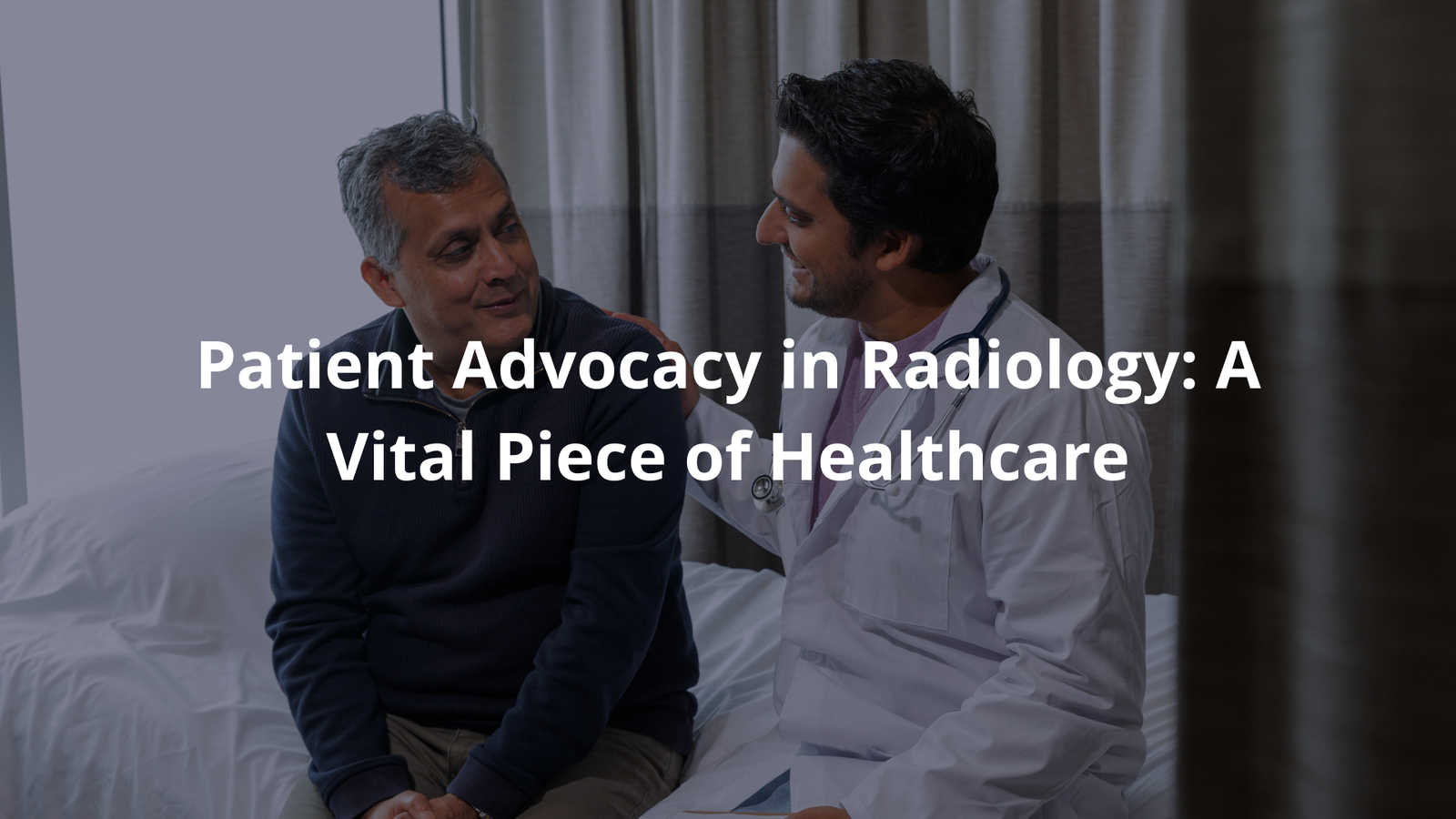Patient advocacy in radiology improves healthcare! Discover how empowering patients leads to better outcomes and a more equitable system.
Patient advocacy in radiology matters. It’s about making sure folks get the best possible care, especially when it comes to seeing what’s going on inside their bodies. Getting diagnostic imaging (think X-rays and MRIs, those sorts of ionising radiation machines) shouldn’t be a hassle.
In Australia, it takes a proper team—radiologists, radiographers, and other healthcare workers—to smooth the way for patients. Better access, clearer results, it all adds up to a better experience, doesn’t it? It can even improve results.
Patient advocacy isn’t just good for patients; it helps doctors, too. Everyone benefits when things run smoothly. Keep reading to understand how.
Key Takeaway
- Radiographers help patients by providing important information when radiologist reports are delayed.
- Standard practices ensure patient safety and encourage feedback for improvement.
- Advocacy groups push for better access to healthcare services, especially in remote areas.
Role of Radiographers in Patient Advocacy
Radiographers, they’re like the quiet achievers in medical imaging, like lifeguards watching over everyone. Their work, called PIE, becomes super important when radiologists, the image experts, take a while to send back reports. This is especially vital in rural areas, where radiologists are rare.
These radiographers help doctors understand images, which boosts patient care, its a real team effort.
They work with the machines, keep them running, follow safety rules, and watch over patients, its a crucial job in healthcare.
And, though the RANZCR doesn’t have rules allowing radiographers to read images, they still assist doctors, its a team job.
- Communication: Radiographers talk with doctors, sharing what they see in the images.
- Patient Care: Making sure patients get the best care.
- Support: Studies show their help is valuable, something to look into. [1]
So, remember, radiographers aren’t just pressing buttons, they’re a key part of the team.
Standards and Feedback Mechanisms
The RANZCR, they’ve made rules for how radiology places should work all over Australia, important, it is, like making sure everyone wears sunscreen.
These rules cover safety, keeping machines in good nick, and training staff, making sure everyone knows their stuff. Patients can also give feedback, this helps to make things better.
- Standards: The RANZCR sets the rules for radiology in Australia.
- Feedback: Patients share their thoughts, this is how things improve.
- Patient Safety: Rules keep patients safe, especially in fluoroscopy, where tests use more radiation.
The Australian Patients Association, APA, fights for patients rights, improving healthcare by asking patients what they think. When patients are listened to, they feel better about their care, simple.
Advocacy by RANZCR
Now, RANZCR, they aren’t just about setting rules and standards, no, they’re also proper advocates for better access to crucial diagnostic tools, like MRI machines, especially for those living out in the sticks. It’s one thing to say all Aussies deserve good healthcare, but it’s another thing to make it happen. It is a pretty big deal. [2]
This is really crucial ’cause some people live further away from big hospitals and don’t have easy access to the services. They could be waiting ages for a scan, which isn’t ideal if they’re unwell, what can they do?
- Access: RANZCR pushes for better access to MRI machines, especially rurally, that’s fair.
- Evidence: “Choosing Wisely Australia” encourages doctors to use evidence based practices, that’s smart.
- Efficiency: Reducing unnecessary scans is good for patients and the system, it saves everyone time.
And there’s this program, “Choosing Wisely Australia,” which encourages doctors to use evidence based practices, it is good. This helps cut down on unnecessary scans, which is better for patients, and it makes the whole healthcare system more efficient. Less waiting, less radiation, less stress, who would say no to that?
Advanced Practice Roles
Credits: Riverside Health
Radiographers, those clever cookies, have put forward some ideas for advanced practice roles, all to improve patient care and sort out workforce shortages, because no one wants to be overworked.
These roles would mean more responsibility for radiographers, allowing them to work hand in glove with other healthcare pros. It’s about making the most of everyone’s skills, kind of like a well oiled machine.
- Advanced Roles: Radiographers want more responsibility to improve care.
- Collaboration: They want to work more closely with other healthcare professionals.
- Resistance: Some private radiologists aren’t too keen on the idea, a little roadblock there.
But here’s the snag. Some private radiologists haven’t been too thrilled about this idea. Maybe they’re worried about their own patch, who knows? This resistance can slow down progress in patient care. Everyone needs to respect each other’s roles in the healthcare team. If the medical community is siloed, then it makes the patient experience less than perfect.
Interventional Radiology Advocacy
Now, there’s also the Interventional Radiology Society of Australasia, IRSA, they’re another mob working hard for patients. Their thing is minimally invasive, image guided procedures that keep patients safe while giving them top notch care. It’s like fixing a car engine without taking the whole thing apart, less fuss, faster recovery.
When you think about the advances in technology, it’s easy to get excited about how these procedures can help patients bounce back quicker. Less scarring, less pain, back on your feet sooner, it’s a pretty compelling picture.
- Minimally Invasive: IRSA focuses on procedures that are gentle on the body.
- Image Guided: Using technology to see what they’re doing inside.
- Education: Promoting education and teamwork in interventional radiology.
The IRSA, they also push education and teamwork in interventional radiology practices, which is mega important for better patient outcomes. If everyone knows their stuff and works together, patients are bound to benefit. So keep an eye out for what they’re up to, you might be surprised.
Radiation Therapy Awareness
RANZCR, they’ve also launched this “Targeting Cancer” campaign, trying to get the word out about the upsides of radiation therapy for cancer patients, because let’s be honest, a lot of folks don’t really know what it’s all about. It is not always a bad thing. This campaign tries to educate healthcare professionals and improve referral pathways.
Making it easier for patients to get these important services, that is what its all about. Getting the right information to the right people at the right time, it makes all the difference.
- Awareness: “Targeting Cancer” campaign raises awareness about radiation therapy.
- Education: Educating healthcare professionals about the benefits.
- Referral: Improving referral pathways to make access easier for patients.
It’s sort of wild how these initiatives can change the lives of patients who need this type of treatment. So, next time you hear about radiation therapy, remember it’s not always a scary thing, it can be a real lifesaver. Maybe we should all pay a bit more attention.
Especially when children are involved, protocols for paediatric radiation safety are absolutely essential, and awareness campaigns like Targeting Cancer can help ensure everyone is informed about best practices.
Challenges

While there’s a lot of good stuff happening in radiology, there are still a few bumps in the road when it comes to sticking up for patients. It’s not all sunshine and rainbows, you know.
Like how some private radiologists are a bit resistant to these advanced roles for radiographers, it’s not always straightforward. They might be worried about stepping on toes, about professional boundaries and, let’s face it, about their wallets. This resistance raises important questions about radiation ethical practices within the medical community.
- Resistance: Private radiologists resist advanced roles for radiographers.
- Communication: Communication breakdowns between radiographers and referring doctors can happen.
- Boundaries: The roles that they can play in the medical community.
Communication can be a bit of a problem, too; sometimes the pathways between radiographers and doctors get a bit tangled, and that can lead to misunderstandings. These issues need sorting out sharpish to improve patient care and make the whole experience better. If everyone’s on the same page, patients are less likely to fall through the cracks, and that’s what we all want, isn’t it?
FAQ
What Are My Rights When Getting Medical Images?
Patient rights matter a lot in radiology! When you need diagnostic imaging, you have the power to know what’s happening. Radiological services should explain everything clearly. You can ask questions about the procedure, understand what’s going on, and feel comfortable. Healthcare communication is super important – your team should make sure you know what to expect and feel supported during your imaging test.
How Can I Understand My Medical Pictures?
Patient education resources help you learn about your images. Radiology reports can be tricky, so always ask questions! Image interpretation might sound complicated, but your healthcare team can break it down simply. Multidisciplinary team collaboration means different doctors work together to help you understand your medical imaging technology. Don’t be shy – ask what those pictures really mean!
Is Medical Imaging Safe for Me?
Patient safety is the top priority in radiological services! Radiation safety rules keep you protected during diagnostic imaging. The healthcare system works hard on error reduction and patient-centered care. Your radiographer will explain everything and make sure you’re comfy. Quality assurance measures are always in place to keep you safe and make sure everything goes smoothly.
How Can I Be Part of My Own Healthcare?
Patient empowerment means you’re the boss of your health journey! Informed consent lets you make choices about your care. Shared decision-making means you and your doctors work as a team. Patient advocacy groups can help you understand your options. You have the right to ask questions, understand your imaging, and feel confident about your healthcare choices.
What If I Live in a Rural Area?
Rural healthcare access can be tricky, but teleradiology helps! Medical imaging technology brings healthcare closer to you. Even with radiologist shortages, clever solutions help you get the care you need. Healthcare accessibility is important, so digital literacy support and patient-centered radiology design make sure everyone can get good healthcare, no matter where they live.
How Can I Give Feedback About My Imaging Experience?
Patient feedback systems are super helpful! Your thoughts matter in patient satisfaction surveys. Continuing professional development means doctors always want to improve. Electronic medical records help track your experience. Your input helps radiology departments get better at caring for patients. Don’t be afraid to share how your imaging went – good or not-so-good!
How Does My Information Stay Private?
Patient privacy is super important in radiological services! Healthcare policy protects your personal information. Patient data protection means your details stay safe and sound. Patient-radiologist communication always keeps your privacy in mind. Digital literacy helps you understand how your information is kept secure. You can feel confident that your medical details are protected.
Conclusion
Patient advocacy in radiology, it’s pretty bloody important for better healthcare here in Australia. Groups like RANZCR and APA are working hard to improve things, but there are still a few hurdles to jump.
It comes down to teamwork, getting feedback, and making sure everyone’s educated; we can help make sure patients get the best care possible. And if you’re ever scratching your head or have questions about your imaging, or your healthcare experience, remember there are resources and people who want to help you. Just ask.
References
- https://pmc.ncbi.nlm.nih.gov/articles/PMC10920952/
- https://treasury.gov.au/sites/default/files/2022-03/258735_royal_australian_and_new_zealand_college_of_radiologists.pdf




